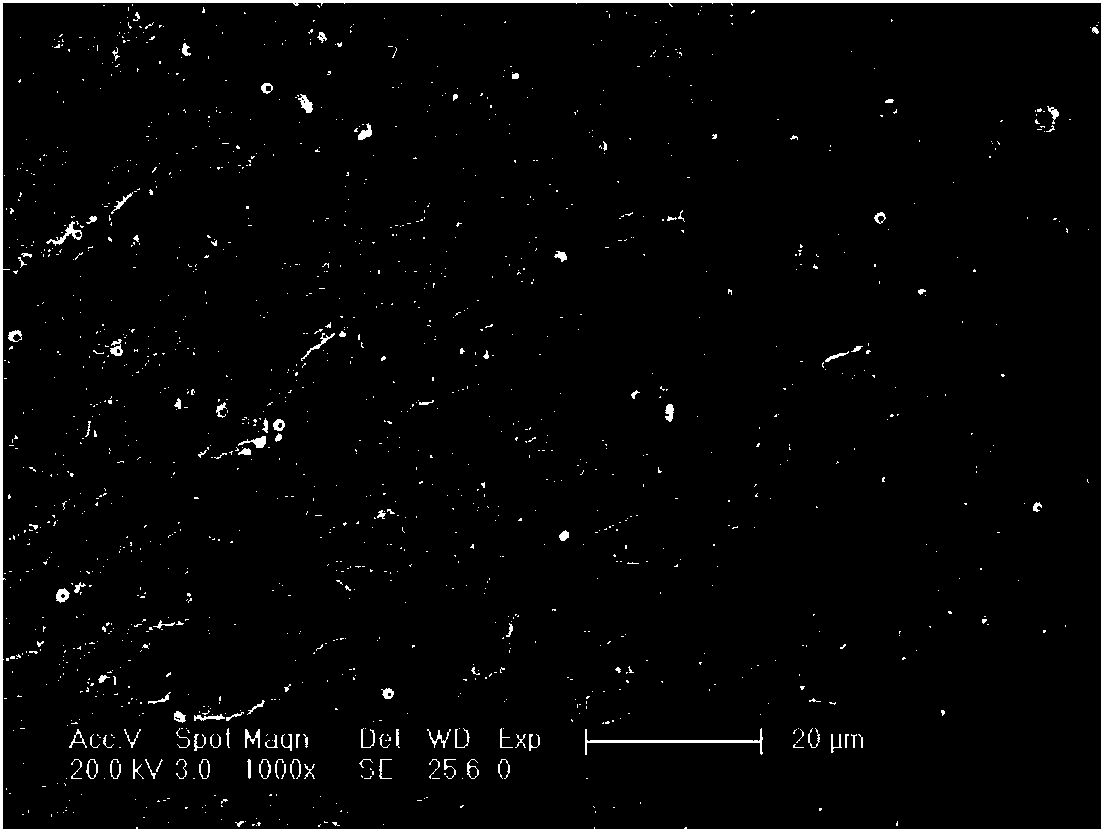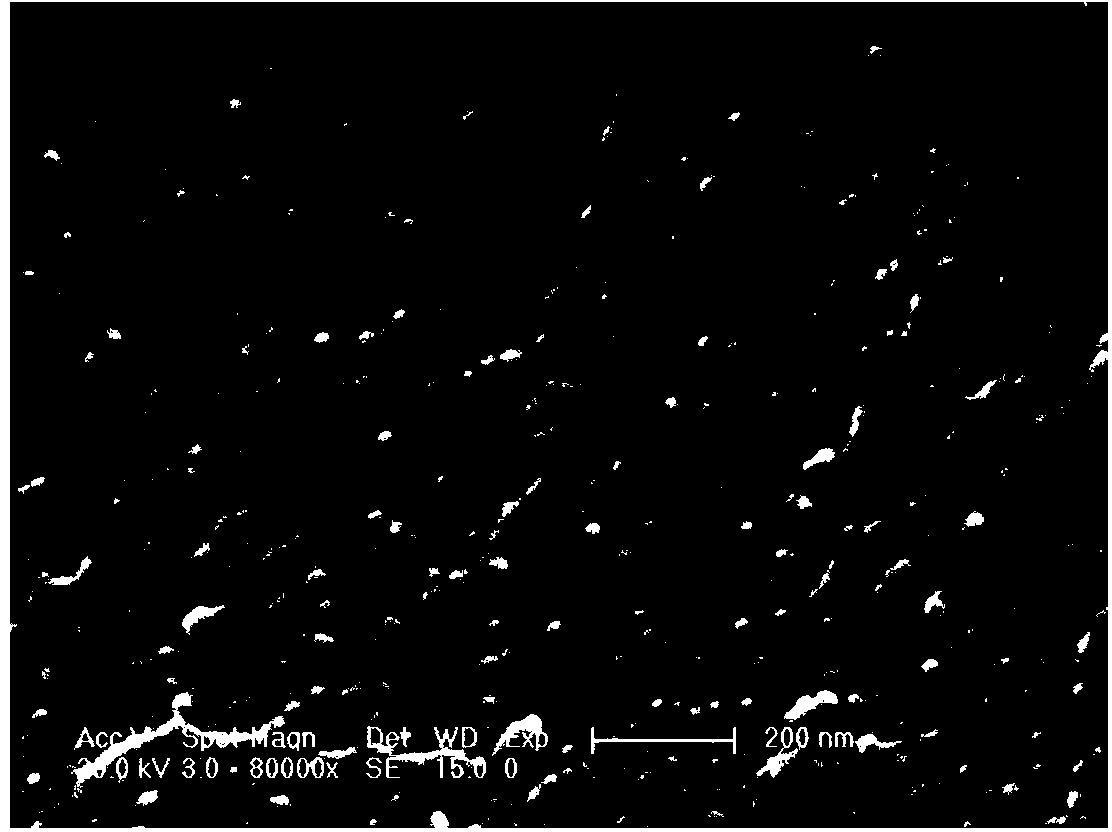Preparation method for porous type polyacrylamide macromolecule hygroscopic material
A technology of polyacrylamide and moisture-absorbing materials, which is applied in the field of preparation of porous polyacrylamide polymer moisture-absorbing materials, which can solve the problems of small saturated moisture absorption capacity and poor moisture absorption rate, and achieve fast regeneration, low energy consumption, and reduced self-volume Effect
- Summary
- Abstract
- Description
- Claims
- Application Information
AI Technical Summary
Problems solved by technology
Method used
Image
Examples
Embodiment 1
[0018] Step (1). Put 20g of acrylamide into a beaker, adjust the pH to 7 with sodium hydroxide, then add 2g of porogen urea, 0.02g of sodium bisulfite, 0.02g of ammonium persulfate, 0.2g of N,N'- Methylenebisacrylamide, 74.56g of deionized water, and fully stirred to obtain a mixed solution; pour the mixed solution into a reaction tube, fill it with nitrogen and oxygen in deionized water at 22°C for 30 minutes, and then seal it to obtain a mixed reactant;
[0019] Step (2). Heat the mixed reactant obtained in the above step (1) in a constant temperature water bath at 45° C. to allow it to fully react for 4 hours to obtain a transparent gel-like polymer, which is washed and filtered to obtain the final product;
[0020] Step (3). The final product is sliced, granulated, pore-forming (dried at 100° C. for 4 hours), and pulverized to obtain a porous polyacrylamide polymer hygroscopic material with a thickness of 0.5 cm.
[0021] Step (4). Performance test:
[0022] Hygroscopic p...
Embodiment 2
[0024] Step (1). Put 23g of acrylamide into a beaker, stir evenly, then adjust the pH to 7 with sodium hydroxide, then add 2.3g of porogen polyethylene glycol 200, 0.023g of sodium bisulfite, 0.023g of supernatant Ammonium sulfate, 0.23g N, N'-methylenebisacrylamide, 68.81g deionized water, mixed solution was obtained after fully stirring; the mixed solution was poured into the reaction tube, filled with nitrogen in deionized water at a temperature of 23 ℃ After 30 minutes of oxygen sealing, the mixed reactant was obtained;
[0025] Step (2). Heat the mixed reactant obtained in the above step (1) in a constant temperature water bath at a temperature of 50° C. to allow it to fully react for 4.5 hours to obtain a transparent gel-like polymer, which is washed and filtered to obtain the final product;
[0026] Step (3). The final product is sliced, granulated, pore-forming (dried at 105° C. for 4 hours), and pulverized to obtain a porous polyacrylamide polymer hygroscopic material...
Embodiment 3
[0031] Step (1). Put 26g of acrylamide into a beaker, stir evenly, then adjust the pH to 7 with sodium hydroxide, then add 2.6g of porogen polyethylene glycol 400, 0.026g of sodium bisulfite, 0.026g of supernatant Ammonium sulfate, 0.26g N, N'-methylenebisacrylamide, 64.74g deionized water, mixed solution was obtained after fully stirring; the mixed solution was poured into the reaction tube, filled with nitrogen in deionized water at a temperature of 25 °C After 30 minutes of oxygen sealing, the mixed reactant was obtained;
[0032] Step (2). Heat the mixed reactant obtained in the above step (1) in a constant temperature water bath at a temperature of 55° C. to allow it to fully react for 5 hours to obtain a transparent gel-like polymer, which is washed and filtered to obtain the final product;
[0033] Step (3). The final product is sliced, granulated, pore-forming (dried at 108° C. for 5 hours), and pulverized to obtain a porous polyacrylamide polymer hygroscopic material ...
PUM
 Login to View More
Login to View More Abstract
Description
Claims
Application Information
 Login to View More
Login to View More - R&D
- Intellectual Property
- Life Sciences
- Materials
- Tech Scout
- Unparalleled Data Quality
- Higher Quality Content
- 60% Fewer Hallucinations
Browse by: Latest US Patents, China's latest patents, Technical Efficacy Thesaurus, Application Domain, Technology Topic, Popular Technical Reports.
© 2025 PatSnap. All rights reserved.Legal|Privacy policy|Modern Slavery Act Transparency Statement|Sitemap|About US| Contact US: help@patsnap.com


